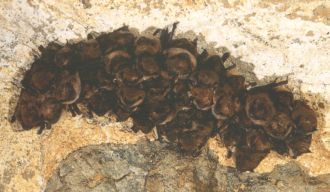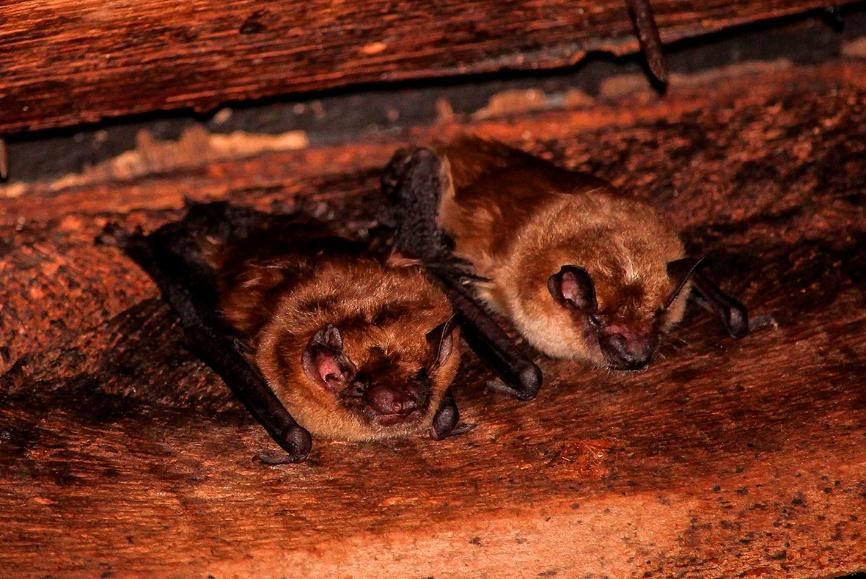Media release
From:
Overheating bat boxes put bats in mortal danger during heatwaves
Brief summary: Bat boxes could be death-traps for nocturnal bats during heatwaves say researchers in Journal of Experimental Biology. When bat boxes are situated in full sun in a heatwave the temperature within can exceed 50°C during the day when the bats are asleep, roosting, and unable to relocate, causing them to suffer extreme dehydration and die.
Staying cool during heatwaves is challenging for small creatures. But the problem could be even more extreme for nocturnal creatures that are unable to move to cooler locations while slumbering; ‘roosting bats may face lethally high body temperatures during extremely hot days’, says Ruvinda de Mel, from the University of New England, Australia. And bat boxes are often designed to retain heat to keep bats cozy, which could place the animals at even greater risk during heatwaves, depending on the box’s position in the sun. de Mel, Dylan Baloun and Zenon Czenze, also from the University of New England, wondered how much of a risk poorly positioned bat boxes pose to roosting big brown bats (Eptesicus fuscus) during a heatwave. The team publish their discovery in Journal of Experimental Biology that bat boxes situated in full sun on a hot day could warm to temperatures exceeding 50°C while the bats are asleep and unable to move, causing them to die from extreme dehydration.
To verify the risk to sleeping bats, de Mel and colleagues travelled to Lillooet, in the unceded territory of the St’át’imc Nation, Canada, in August 2023. There, the team gently collected 22 bats from the surrounding woods and forests and measured the amount of carbon dioxide exhaled by the animals – allowing them to calculate the animals’ metabolic rates – and the amount of water that the bats lost from their bodies by evaporation at temperatures ranging from 28 to 48°C, before returning the animals to their homes. Over the same month, the team recorded the temperatures in four man-made roosts: two in the roof of a building at the nearby Kwotlenemo Lake, Canada – one facing east reaching 38.5°C and the second facing west only reaching 32°C – and two bat boxes located in direct sunlight in Lillooet, both of which exceeded 40°C.
Back in Australia, the researchers used their measurements of the water losses experienced by the warm bats to calculate how much water bats inside the roosts would have lost on the hottest day in
Big brown bats (Eptesicus fuscus) roost in a Minnesota barn. Photo credit: Connor Long, CC BY-SA 4.0, via Wikimedia Commons.
2023. Fortunately, the temperatures that year didn’t pose a serious threat to the bats, which would have lost between 2.5% and 6.2% of their body mass in water in the Kwotlenemo Lake roosts and 10.8% to 15.3% of their body mass in the relatively exposed bat boxes in Lillooet. But how would bats have coped in the roosts during the extreme heat wave of June 2021?
This time the calculations were alarming. On the hottest day, the temperature in the east-facing Kwotlenemo Lake roost would have rocketed above 50°C for 6 h, peaking at 55.5°C. Potentially, the bats could have lost more than 50% of their body mass, which would have killed them, while the bats in the Lillooet bat boxes would have lost 25.5% and 36.7% of their body mass, which would also have been fatal.
‘Inappropriately placed artificial [bat] roosts could function as death-traps for bats due to overheating’, says de Mel, suggesting that conservationists provide bats with a choice of roosts in the same location: some constructed from insulating materials to maintain a stable temperature while others could cool and warm relatively quickly. He suggests also that some roosts could be located in full sun to warm quickly in early spring while others are placed in shade for protection during the summer. But the message is clear: think hard about where you locate your bat box, or it could become a bat sarcophagus during a heatwave.
Multimedia





 Australia; International; NSW; VIC
Australia; International; NSW; VIC


